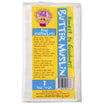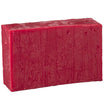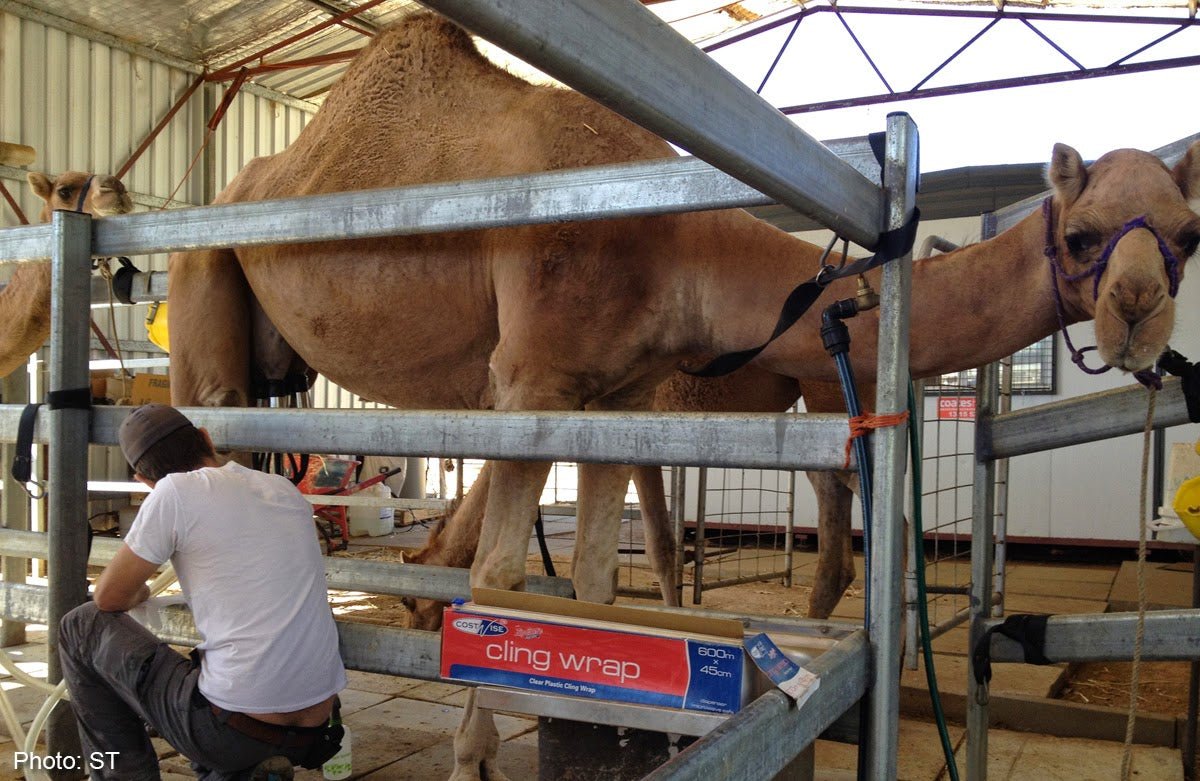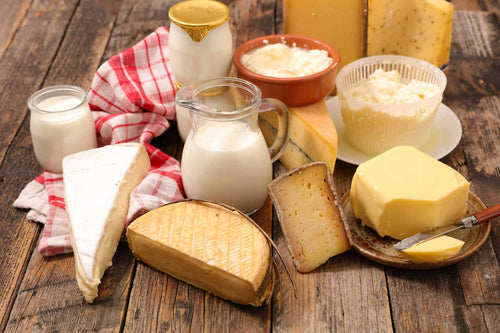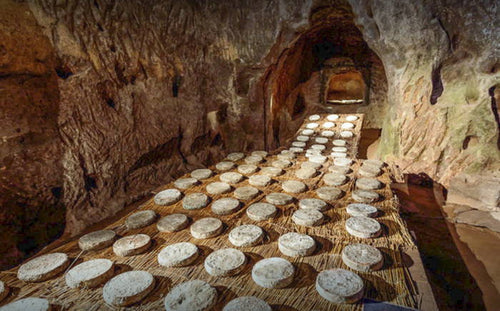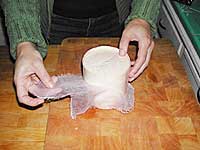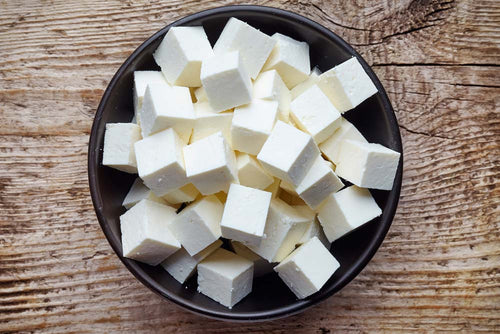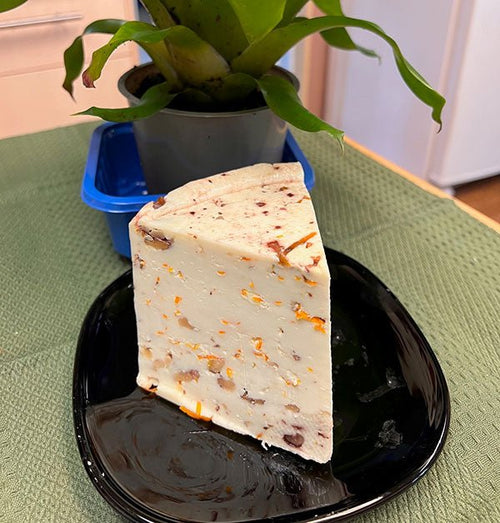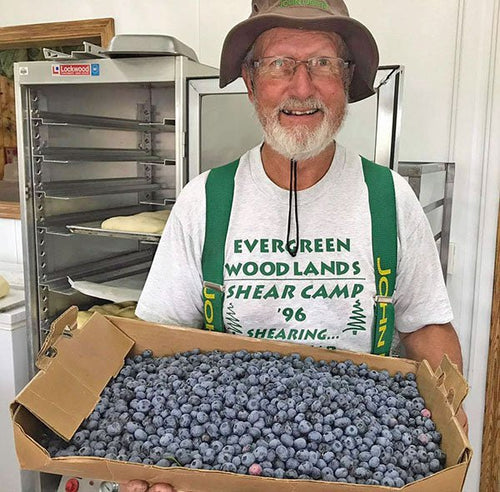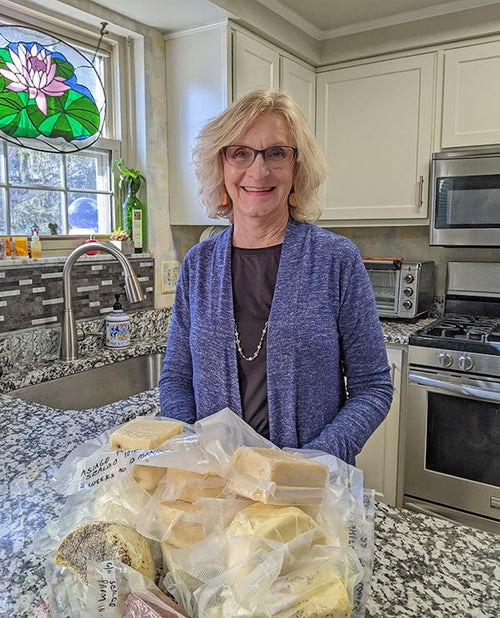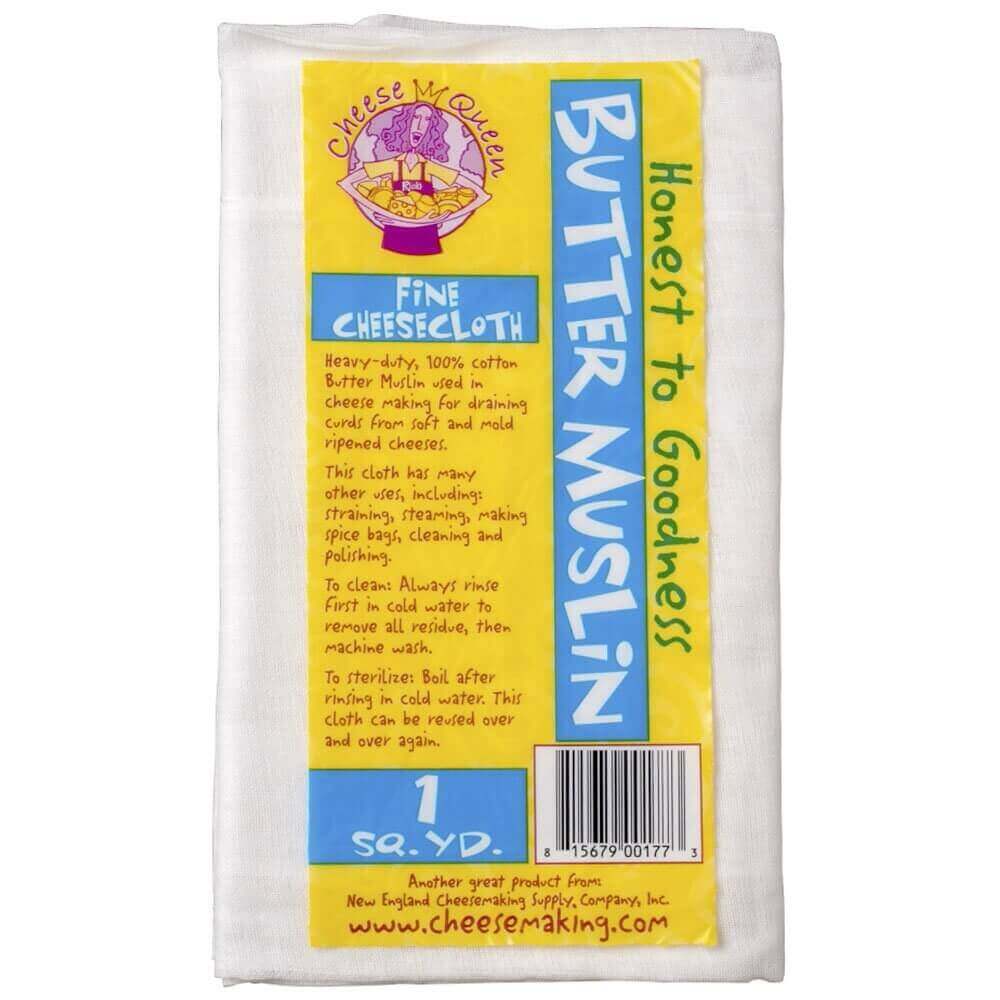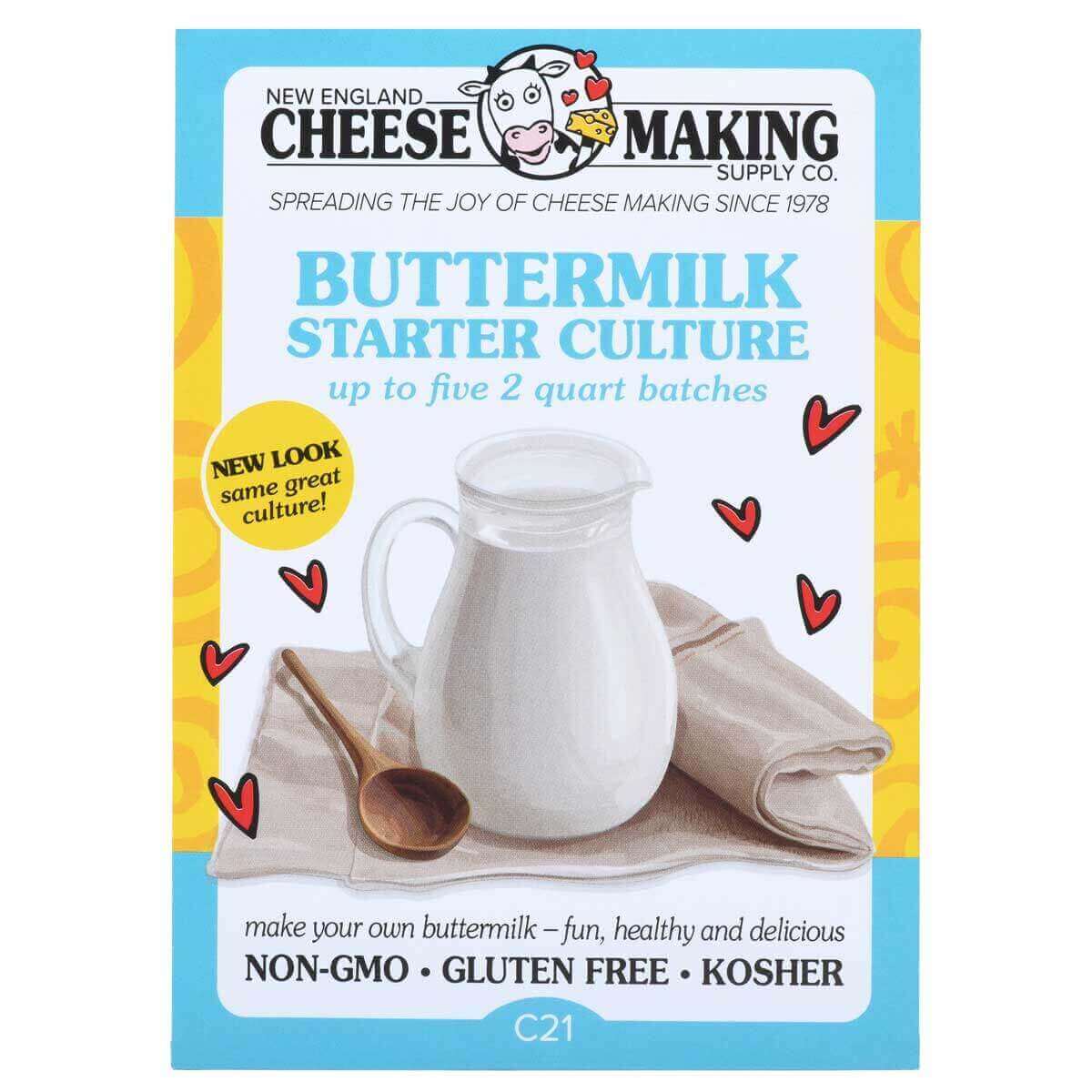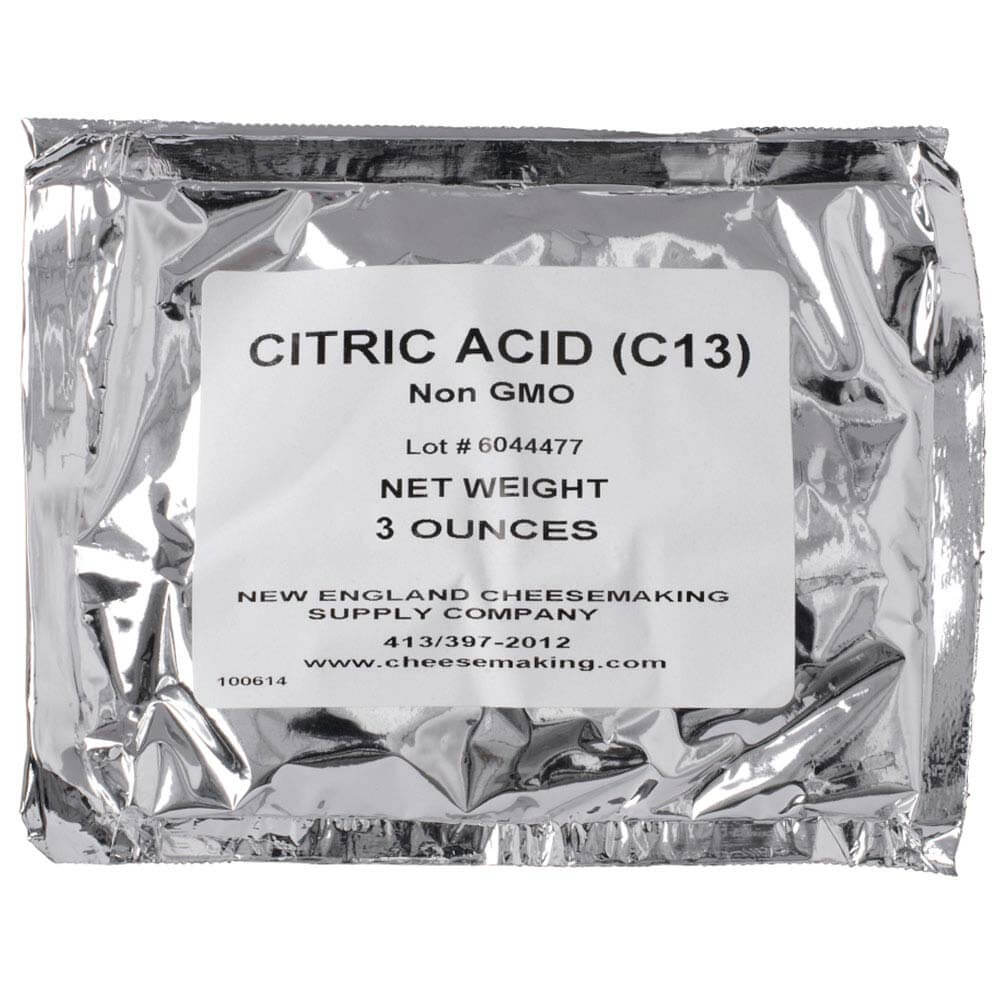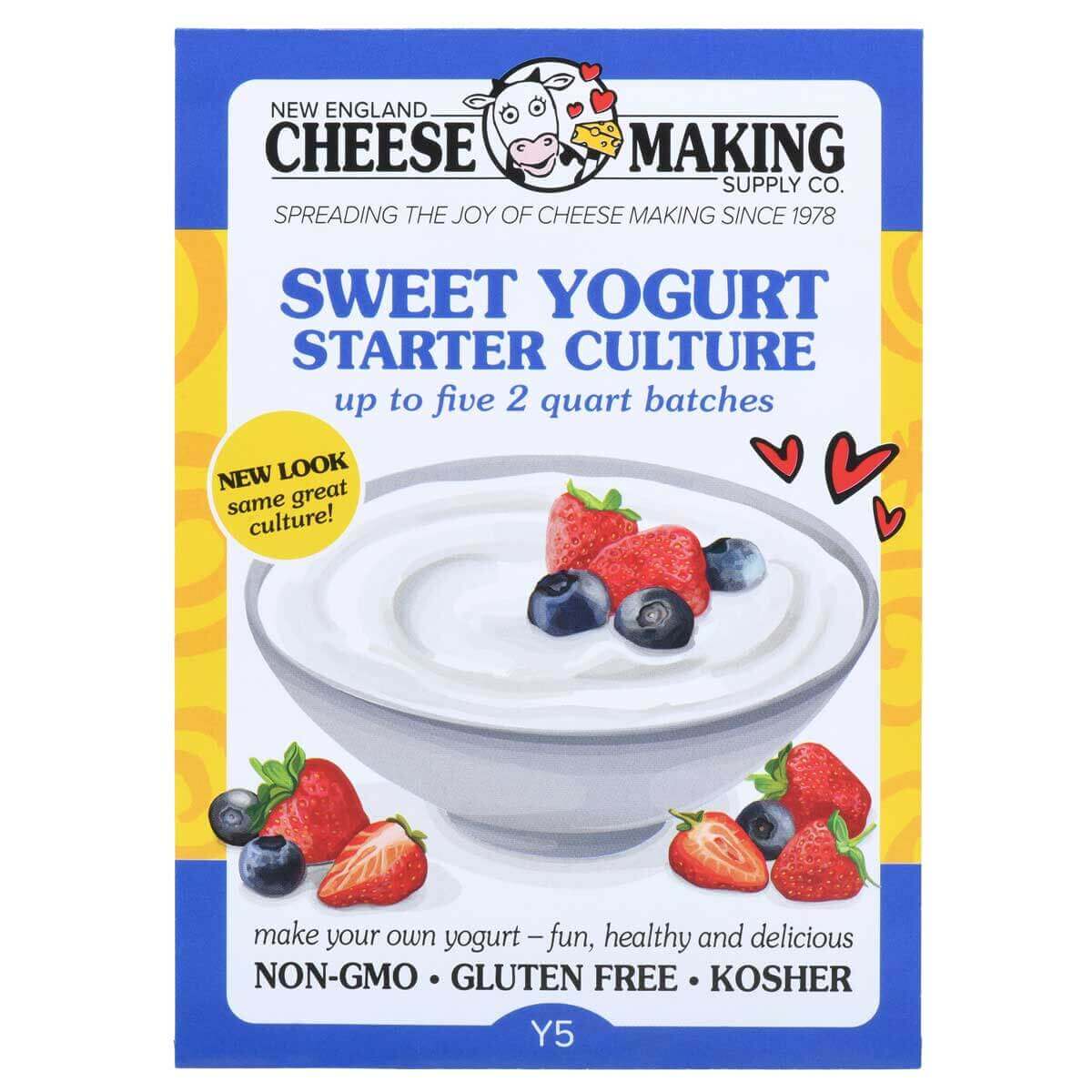 |
| Selfie taken with her Kindle camera |
We think it’s great when students choose cheese related subjects for their school assignments. It’s nice to know that the younger generation appreciates the fascinating process of making cheese.
Melody Cramer just graduated from high school last spring (home schooled). This is her research paper for a biology class she took at the local community college during her last year of school:

Melody with her homemade fromage blanc
Lactobacilli and Their Enzymes
Melody Cramer
November 22nd, 2013
The production of cheese is a very chemically, enzymatically, and microbiologically complex system. In order for changes like lactose fermentation, lipolysis, and proteolysis to occur, certain bacteria and enzymes must be present. One genus of such bacteria is called lactobacillus, of which there are at least 87 species. Some of its characteristics include being rod-shaped, acid tolerant, and anaerobic. It is part of a group of organisms called lactic acid bacteria (LAB) that produce lactic acid as a major by-product of metabolizing lactose and other sugars. Although lactobacilli are found in the intestines of animals, fermenting plant matter, and meat products, the focus of this paper will be on the species and their enzymes that are used for cheese making.
Proteolysis plays a large role in the texture, flavor, and smell in most aged cheeses. The proteolytic enzymes in the cell wall of lactobacilli are catalysts for the hydrolysis of milk proteins, mostly caseins, into peptides. Two proteases (endopeptidases and exopeptidases) further the process and finish with an end product of smaller peptides and amino acids. Endopeptidases split the peptides from the inside, while exopeptidases break off 1-3 amino acids from the peptide chains.
Milk by itself does not contain enough free amino acids and peptides to support very much bacterial growth. Thus, proteolysis is necessary for the ripening of cheese because it enables lactobacilli to grow properly. There are three categories of enzymes in the proteolytic system: proteinases that make peptides from caseins, transport enzymes that move broken-down material across the cytoplasmic membrane, and peptidases that further break down peptides. It has been discovered that lactococci, another genus of cheese culture, have a similar proteolytic system to that of lactobacilli, as they both need free amino acids and peptides to both grow and influence the taste and texture of the cheese (bitterness is the result of an excess of certain peptides).
Lipolysis is the breakdown of milk fat by lipolytic enzymes in lactobacillus. It includes the degradation of free fatty acids (FFA), which contribute flavor to the cheese during ripening. The enzymes split the ester line between a fatty acid and the glycerol backbone of a triacylglycerol to make FFA and acylglycerols. FFA have very strong flavors, adding cheesy, pungent, waxy, soapy, or rancid flavors to the cheese. Lipolytic enzymes are normally divided into two groups: lipases and esterases. Esterases hydrolyze 2-8 carbon atom-long cyl ester chains, and mostly work with shorter lipids that are partly water soluble. Lipases hydrolyze acyl ester chains that are longer, with 8-10 carbon atoms. Since the lipids that they work with are longer, they are hydrophobic. Lactobacilli are seen as generally weaker lipolytes, but in certain cheeses are actually the only or main bacteria to carry out lipolysis.
LAB are important during the ripening process because most of the starter cultures die over that period of time. The flavor in hard cheeses is mostly thanks to lactobacilli, who produce lactic acid by way of fermentation. By continued proteolysis, the quantity of lactobacilli increases as the cheese matures. Hence, cheese that is left to ripen for long periods of time will contain very strong flavors which are decided by lactobacilli and other LAB. Lactobacilli are important in regard to the ripening of cheese because they control the pH of the cheese, cause proteolysis and lipolysis, encourage the growth of other organisms, and contribute to the flavor compounds of the cheese; proteolysis has been identified as the most important process that affects the taste of the cheese. Lipolytic activity is not large during the ripening of the cheese, but it happens nonetheless. It can occur from a number of different things, including starter bacteria, milk lipase, enzymes added to the milk, or adventitious bacteria. However, milk lipase will not be active unless the milk is raw. Lactobacilli are often used along with streptococcus thermophilus and propionibacterium shermanii to enhance flavor development.
Autolysis is the sudden disintegration of bacterial cells that causes them to release their cytoplasmic contents, including their intracellular enzymes. When starter cells lyse, they give up peptides and esterases that convert milk fat and amino acids into flavor. One of the factors of the time it takes for certain cheeses to mature is the speed at which the starter cells are lysing. Autolysis is the task of endogenous enzymes. Autolysins create bonds which are used to create and strengthen cell walls. Loss of control of those enzymes can kill the cell by causing autolysis. Some endogenous enzymes are made in the ribosomes of bacteria who produce them to kill their enemies and competitors. Others are encoded by DNA and make during the bacteriophage lytic cycle. They use hollin proteins to transport their lysin across a cell wall, causing the destruction of the cellular membrane and the dispersal of the lysin. While autolysis is important in increasing fermentation, it does not necessarily affect the flavor of the cheese. In fact, a recent study showed that it was the cheese with an intermediate amount of autolysis that tasted the best.
Lactobacilli is a genus of bacteria that has evolved to fill certain niches. Driven by environmental changes, stress, and a lack or excess of nutrients, each species has its own unique properties. But it is easy to see that they all came from a common ancestor. For example, lactobacillus helveticus, a species useful in the production of swiss, cheddar, and emmental cheese, is very similar to lactobacillus acidophilus, even though l. acidophilus resides in the gut. L. helveticus has a non-functioning bile salt hydrolase gene, which is only useful in the gastrointestinal tract. The way that l. acidophilus and l. helveticus are so similar shows that l. helveticus’ cheese-making properties evolved at a highly controlled level. Lactobacillus helveticus is known for being a thermophilic culture, functioning at temperatures up to 50°C.
In conclusion, without LAB, cheese would be a tasteless glob of milk solids coagulated by rennet. Thankfully a broad spectrum of bacteria exist that add texture, aroma, and flavor. To study lactobacilli is to merely scratch the surface of a cheese-maker’s arsenal, but even by itself it demonstrates the many processes used to give cheese a good and distinctive taste. Thanks to lactobacillus there is variety in the dairy world and cheeses ripening in their caves. At this present time new ways of using cultures are being discovered and developed that will simplify and revolutionize the craft of cheese making.
Bibliography
Slattery, L., J. O’Callaghan, G.F. Fitzgerald, T. Beresford, and R.P Ross. “Invited review: Lactobacillus helveticus – A thermophilic dairy starter related to gut bacteria.” Journal of Dairy Science. Vol. 93 no. 10, 2010: page 4435-4454. Print.
Tan, W.S., M.F., R. Budinich, J.R Ward, Broadbent , et al. “Optimal growth of Lactobacillus casei in a Cheddar cheese ripening model system requires exogenous fatty acids.” Journal of Dairy Science. Vol. 95 issue 4. Apr 2012: 1680-1689. Print.
Khalid, Noraini M. , and Elmer H. Marth. “Lactobacilli – Their Enzymes and Role in Ripening and Spoilage of Cheese: A Review.” Journal of Dairy Science. Vol. 73, 1990: 2669-2684



















